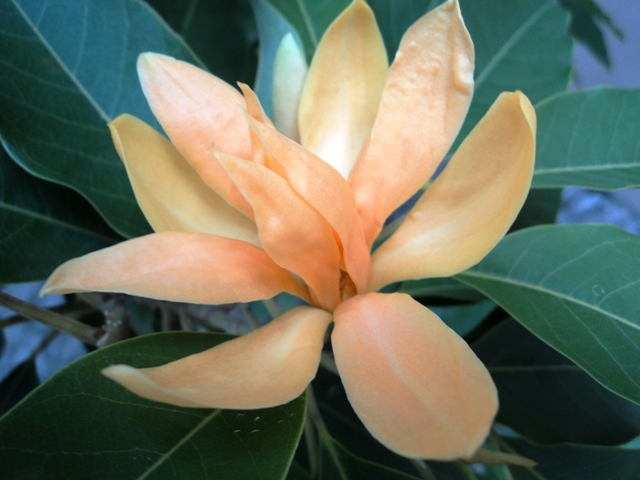Names of Yellow Oleander in different languages
Yellow oleander is also known as Mexican oleander, Cook tree, Milk Bush Tree, Dicky plant, Be-still tree, Exile tree, Lucky nut etc.
- It is called Peeli kaner, Kaneil, Zard kunel in Hindi
- Kolkaphul, Haldi karobi, China karobi in Bengali
- Sammulhimar, Diffuli in Assamese
- Utonglei in Manipuri
- Bitti, Pilvalakenhera, Kanher in Marathi
- Pila-kanera in Gujrati
- Kanir in Punjabi
- Pachaiyalari, Alari, Tiruvachippu, Manjataleri, Ponnarali in Tamil
- Manja areli, Pachcha areli in Malayalam
- Pachaganeru, Erra Ganneru, Jannerat in Telugu
- Kadukasi, Kanagilu, Kharjaher, Kanogaluin Kannada
- In Sanskrit it is called Ashvaghna, Ashvamaraka, Ashvantaka, Hayamaara, Divyapushpa, Haripriya, Ravipriya, Shatakunda, Karavira, Viraka, Gauripushpa, Siddhapushpa etc.
- We call it Kaniar in my mother tongue Oriya.
The Botanical name is Cascabela thevetia (L.) (Syn.Thevetia peruviana) (Apocyanaceae family)
The Plant structure of Cascabela thevetia
It is an average height tree which grows to about 10 to 15 feet high. The leaves are linear and of 13 - 15 cm in length. The flowers are beautiful bright yellow coloured, twisted (there are white and orange variants too). They look like bright yellow bells. Tips of leaves are slender, pointy and of a deep green shade. The fruits are globular, four-sided, fleshy and of 4 to 5 cm diameter. Yellow Oleander fruit is green when unripe, then turns a bright, earthy red, and finally it becomes black, the inside of which turns a glossy, dark brown stone, which is often called the "lucky nut." The plant is basically grown as an ornamental tree everywhere both in gardens, roadside and at temple precincts for offerings.
All parts of the plant, especially the kernels of the fruit, the seeds are poisonous. Ingestion of any part of the plant could result in death. The common presenting symptoms are numbness, vomiting, abdominal pain, burning of the mouth, nausea, and diarrhea. Other features seen are occasional convulsions, drowsiness, coma, and cardiac arrhythmia.
Propagation of Yellow Oleander Plant
It contains a milky sap or latex. That makes its propagation easier. You can propagate it from seeds in spring. It Can also be propagated from cuttings in spring-early summer with semi-ripe cuttings of terminal shoots.
Medicinal Properties of Yellow Oleander
The plant has emetic, febrifuge, antiperiodic, abortifacient, antimicrobial, purgative and laxatives properties.
Ayurvedic and Folk Medicinal use of Yellow Oleander
-All parts of the plant are very poisonous. The foliage is not grazed and being poison avoided by livestock. The kernels with a soap base is used as insecticide. The bark and seeds are used to rat poison in rural areas.
-Despite being very poisonous, oleander seeds and leaves are used for various health disorders like asthma, malaria, ringworm, epilepsy, heart conditions, amenorrhoea, venereal diseases, leprosy, indigestion, skin problems and warts, and even cancer.
-Decoction of the bark or leaf in regulated doses is taken to loosen the bowels.
-Because it is an emetic and febrifuge, decoction of the leaves is said to be an effective cure for malarial fever and intermittent fevers, jaundice, intestinal worms.
-The latex is used to alleviate toothache of decayed teeth.
-The juice of the bark is used to treat ulcers and chronic sore.
-It is also applied to soften hard corns and calluses in the feet.
-Infusion of the roots is used in the treatment of snake-bites.
-Water in which the leaves and bark have been soaked is taken to cure amenorrhoea.
-The seeds are used for treatment of dropsy and rheumatism.
-The seed powder is sometimes used to alleviate hemorrhoids.
-The oil obtained from the kernel is applied to treat skin disorders and is used for soap making.
-The paste made of the roots are made into a plaster for treatment of tumors.
-Very slight amount of the fruits are used in ointments and creams.
Fruit of Yellow Oleander
N.B. All the above is solely for informational purpose and NOT INTENDED TO PROVIDE ANY KIND OF MEDICAL ADVICE. A REGD. AYURVEDIC/MEDICAL PRACTITIONER SHOULD ALWAYS BE CONSULTED FOR IT.













































